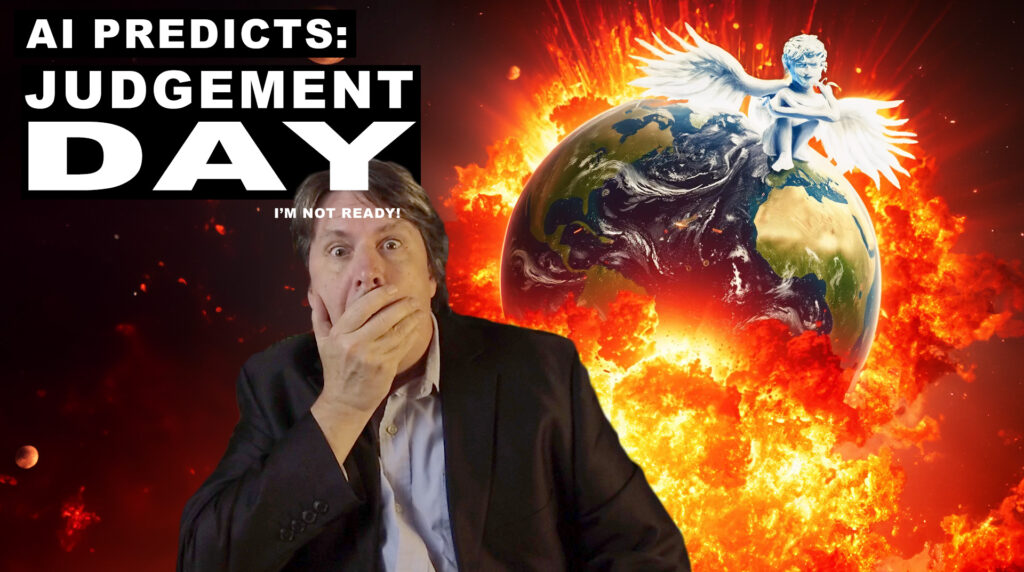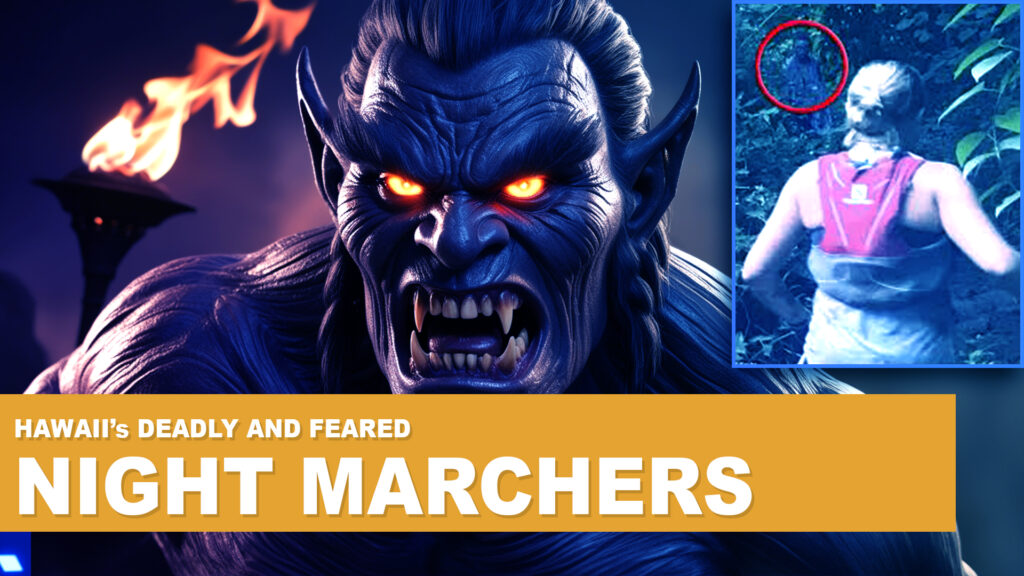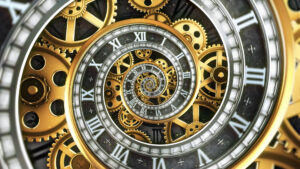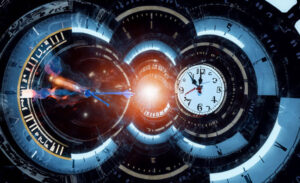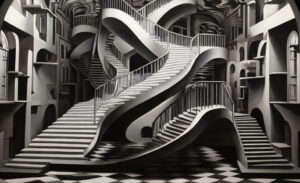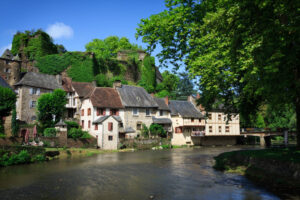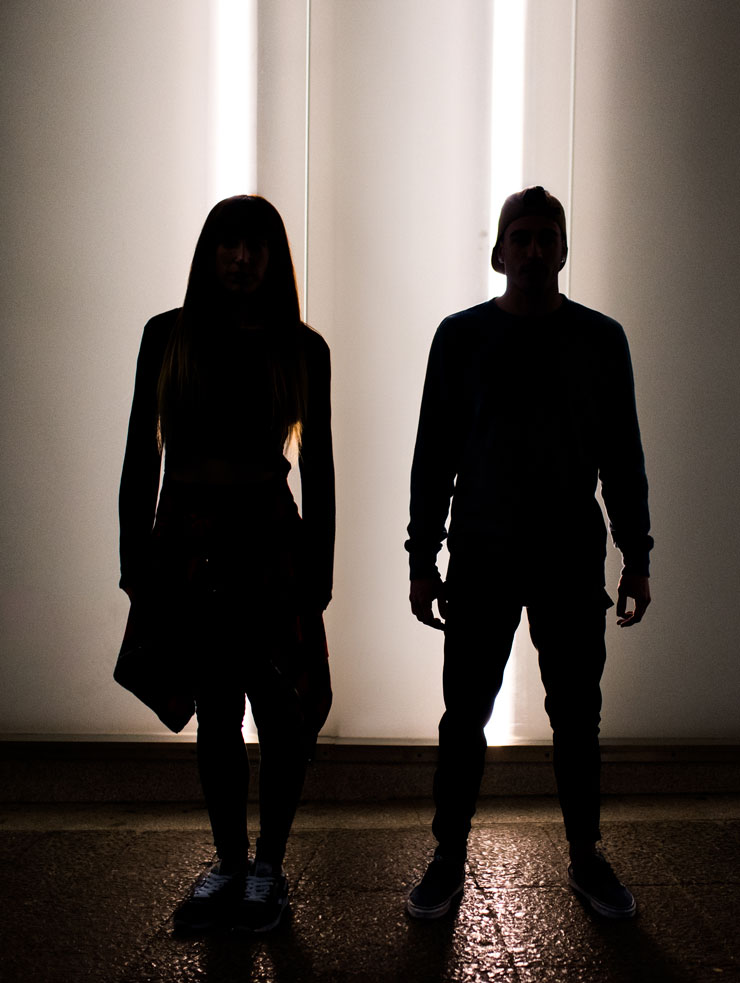The Story of the Polish Time slip:
One minute you’re exploring a ruined castle in porn and the next you’re caught in a swirling vortex of light and sound.
Forget about Hollywood sci-fi because this is the real and incredible story of a group of Polish tourists who claim to have accidentally time-travelled to the 15th century.
You’re on vacation in Poland exploring a crumbling old castle steeped in history.
You take a wrong turn, maybe wander off the beaten path, and then everything goes crazy.
A swirling vortex of light and sound engulfs you. Your body tingles with electricity and in the blink of an eye the world around you transforms. Gone are the smooth walkways and modern conveniences you’re used to. Instead, you find yourself standing on rough cobblestones surrounded by a scene straight out of a history book.
Knights in shining armor jousting in a dusty field.
Villagers in old-fashioned clothing bartering in a bustling marketplace.
It sounds like something out of a movie, right?
Well, this fantastical idea of accidentally traveling through time actually has a name in the realm of science and the unknown. A time slip or a time vortex.
The basic idea is that somewhere, somehow, the normal rules of physics no longer apply.
We usually think of time as a river flowing steadily forward. Imagine it goes haywire with a whirlpool in the middle of the river. A swirling distortion where the current gets all messed up. It’s that very kind of concept behind a time vortex. Science as we know it doesn’t exactly have a user’s manual for bending the laws of physics, especially when it comes to time travel. There are all sorts of theories, though.
Some scientists talk about wormholes, hypothetical tunnels through space-time that could theoretically connect different points in time. Think of them like a shortcut through the cosmic fabric of the universe. Then there’s the mind-bending theory from Einstein.
His theory of relativity suggests that time isn’t a constant, unchanging thing.
It can actually stretch or shrink depending on how fast you’re moving. So imagine you’re zooming around in a spaceship, hurtling through space at near the speed of light. According to Einstein, time would actually slow down for you compared to someone back on Earth. But here’s the twist.
Even though there’s no scientific proof of time slips, these stories keep popping up. People swear they’ve been transported to different eras, some for just a few moments and others for what seems like a lifetime. And as much as I really want to believe, I have to remind myself that there could be other explanations at work here besides time travel. Maybe someone got a little confused or had a very vivid dream. Maybe they’re just trying to get attention. But then again, maybe they really are traveling through time.
And that’s where the story of the Polish tourists gets really interesting.
With their detailed accounts and a mysterious piece of jewelry that shouldn’t exist, this particular tale leaves us scratching our heads and wondering,
could time travel really be more than just science fiction?
The year is the not too far past 2001.
A crisp autumn breeze whips through the crumbling ramparts of Ogrosniak Castle in southern Poland. Sunlight paints the weathered stone in warm hues, casting long shadows from the jagged towers that pierce the sky. Tourists weave through the ruins, snapping photos and marveling at the remnants of a bygone era. Among them are four friends.
Anna, a history enthusiast and leader of the group. Anna’s keen eye first noticed a strange light that appeared to be a portal. Marek, keen on old architecture, was particularly intrigued by the castle. He was the first one to venture into the time portal. Zosia, a linguist by profession, played a crucial role in communicating with the people from the past. And Pietra, the youngest member of the group, he was a tech enthusiast and amateur photographer.
Ogrosniak’s history is as rich as the stories whispered on the wind. Built in the 14th century, the castle has witnessed countless battles and political intrigue. It’s now a skeleton of its former glory, but it still holds a potent charm, a tangible link to the past.
As the four explored a secluded courtyard, Anna, ever the history detective,
noticed a hidden passage, partially obscured by fallen masonry. Her curiosity piqued. She squeezed through the narrow opening, her friends following cautiously behind. The passage led them deeper into the castle’s belly, the air growing thick with dust, and the silence broken only by the echoing drip of water.
After a few tense moments, they emerged into a cavernous chamber. Sunlight filtered through a hole in the collapsed ceiling above, and it cast an eerie glow on the uneven floor. In the center of the room, a swirling vortex of shimmering light pulsed hypnotically. It seemed to defy the laws of physics, a shimmering tear in the fabric of reality. A collective gasp filled the air. Merrick, usually the voice of reason, stammered, searching for a scientific explanation and worried about the structural integrity of the chamber. But Anna, her eyes sparkling with excitement, felt an irresistible pull towards the vortex. A sense of destiny beckoned her.
And Pietra, ever the daredevil, nudged Anna with a mischievous grin.
Well, are we gonna go in or what?
The air crackled with energy. The electricity made their hair stand on end. This wasn’t a tourist attraction. This was something entirely different. An anomaly that defied logic. Fear battled with exhilaration in their hearts. And one question remained. Would they actually be bold enough to step through the shimmering portal,
not knowing what it led to, potentially leading the familiar behind and plunging them into the unknown depths of time?
Yep, because why wouldn’t they?
The four friends stepped through the shimmering portal.
The world dissolved into a kaleidoscope of blinding light and disorienting sounds. A deafening whoosh filled their ears, followed by a sickening sensation of weightlessness. Then, just as abruptly, it all stopped. They fell onto a field of rough, damp grass, coughing and blinking away spots from their vision.
Disoriented and shaky, they took stock of their surroundings. Gone were the cold stone walls and dusty air of the forgotten chamber. In their place stretched a vast expanse of rolling hills, dotted with quaint timber-framed houses with thatched roofs. Smoke curled merrily from the chimneys. And in the distance, the unmistakable clang of metal echoed, a jousting tournament. Excitement crackled in the air. A mix of disbelief and exhilaration.
They had landed smack dab in the middle of a medieval marketplace. Bustling crowds swarmed around them, clad in colorful tunics. Merchants hawked their wares in a cacophony of unfamiliar languages. Skewers of sizzling meat filled the air with mouth-watering aroma, a stark contrast to the pre-packaged snacks they had stashed away into their backpacks. Cautiously, they ventured into the throng, their modern clothing attracting curious stares and hushed whispers.
Anna, with her knowledge of medieval history, she took charge. She managed to barter for some simple tunics and cloaks, transforming the group from conspicuous tourists to somewhat kind of passable locals.
Their first order of business was food. And the market offered a smorgasbord of delights. They sampled roasted boar, hearty stews, and crusty bread still warm from the fire. The flavors were bold and intense and unfamiliar, a far cry from our usual processed food fare.
As they settled on a hay bale to orient themselves, a group of knights in armor clattered past on their way to the jousting arena. The group roared with excitement, their energy was infectious. Marek, ever the scientist, marveled at the intricate details of the armor, the craftsmanship a testament to a bygone era. Zozi admitted worrying about the safety of the jousters, the lack of padding evident compared to modern tournaments. And Pietra couldn’t resist mimicking the clumsy attempts of a few, less than graceful knights, earning them a bewildered yet amusement reaction from the large crowd.
However, the language barrier proved a constant hurdle, even for Zozia, and communication was restricted to gestures and rudimentary phrases. The lack of modern amenities, no running water, electricity, eventually started to take its toll on the group. Anna said she was initially thrilled by the historical immersion, but found herself yearning for a hot shower and a decent cup of coffee. Marek said he missed the comforts of his office, and the ability to explain the world around him with scientific certainty. And Zozia said she longed for the predictability of their old lives, the ability to plan and control their future. And even Pietra struggled with the constant sense of being different, they were outsiders in a world centuries removed from their own.
And yet the group did say there were moments of wonder, learning rudimentary swordsmanship from a patient blacksmith, the thrill of a close call during a friendly archery contest, and the quiet beauty of a starlit night unpolluted by city lights.
They witnessed a traditional wedding celebration, the joyous music and boisterous dancing a stark contrast to the familiarities they were accustomed to back home. They even said they helped a farmer mend his fence, the simple act of manual labor offering a humbling connection to the land. They admitted that, even though slowly, a sense of purpose began to emerge, they realized their unique situation could be a bridge between the past and the present.
Anna, she shared her knowledge of history with a group of curious children, painting vivid pictures of a future they couldn’t even possibly begin to imagine. One of the children hung a pendant around Anna’s neck as a token of a newly forged friendship. Marek, using his scientific background, he helped improve a local craftsman’s pottery techniques, and Zozia, with her organizational and linguistic skills, helped streamline the village’s barter system. And Pietra brought laughter and lightheartedness to their adopted community. But at the end of the day, one really big question loomed, and that was, how do they return?
The portal, that shimmering gateway through time, had vanished without a trace. So, were they doomed to be stranded in the 15th century forever?
Eventually, they returned to the field where they first arrived, their hearts pounding with a mixture of fear and hope. And sure enough, in the distance, a faint shimmering began, growing brighter and larger by the second. It was the portal. It was beginning to open.
Tears welled up in their eyes, a mixture of relief and bittersweet goodbyes. They’d become a part of this community, forging friendships and leaving a lasting impression. But the pull of home, of their own time, was far too strong for them to ignore. And so they stepped through the portal again. The world dissolved around them once more into blinding light and disorienting sounds.
But this time, when they stumbled back to reality, the cold stone walls of the forgotten chamber were still there to greet them. The air was still dusty, and the silence was only broken by the sound of dripping water. Which left them wondering, had this all been a dream?
A sudden glint of gold caught Anna’s eye. It was a necklace around her neck, a simple chain adorned with a polished amber pendant. It was the gift from a now distant friend. A gasp escaped from her lips. The villagers in the 15th century wore similar amber pendants, a symbol of good luck. This was no longer a dream. They had actually traveled through time.
The tale of the Polish Tura spread like wildfire. Skeptics scoffed, scientists debated, and historians marveled at the details they shared. The amber pendant remained the only tangible evidence, a silent testament to their incredible journey.
They became local celebrities, their story a reminder of the mysteries that still lie hidden within the fabric of time. But for Anna, Marek, Zosia, and Petra, the experience was far more than just a mere story. It was a life-changing adventure that had redefined their perception of the world, leaving them forever bound by the shared secret of their journey through time.
The story immediately ignited a firestorm of debate.
Scientists pointed out the glaring absence of scientific evidence, and especially no technological photo or video proof of their claims. And given that Petra, a tech enthusiast, was also a digital photographer, why no photos? Time travel, they argued, simply defied the established laws of physics. Historians echoed these concerns. The details provided felt too convenient, suspiciously reminiscent of historical textbooks. Where was the undeniable proof, a historical artifact, a verifiable interaction with a known figure from the past?
The lone amber pendant? It wasn’t enough to silence doubts.
After all, these pendants were easily purchased at the local gift shops in town. Inconsistencies in their accounts also fueled the fire. One moment the friends described a bustling marketplace, the next a jousting match, and then they were helping a farmer mend a fence. It seemed like an awful lot going on in a single day. Critics seized on these discrepancies, painting the story as a fabrication,
a narrative cobbled together from various historical sources.
Whispers of a hoax spread like wildfire.
Were the four attention-seeking pranksters? Had they somehow staged an elaborate historical reenactment and passed it off as time travel?
Even within their own hometown, doubt lingered.
While the four seemed genuine enough, their tales were utterly fantastical. The pressure on the four friends intensified. But Anna, Marek, Zosia, and Petra remained steadfast, recounting their experiences with unwavering conviction. They yearned to prove their travel through time, but how could they possibly offer evidence from a bygone era when there simply was none?
The amber pendant remained their solitary treasure from the past. A beautiful reminder, but not a scientific fact.
The story of the Polish tourists became a local cultural phenomenon, a reminder of the mysteries that still lie beyond our grasp. Whether it was a genuine journey through time or an elaborately crafted tale, one thing was undeniable.
It challenged cherished beliefs about time and ignited a spark of wonder about the impossible.
However, for the scientific community, the story remains just that. A story without concrete evidence to elevate it to the realm of scientific fact. The return was bittersweet. Back in the familiar thrum of the 21st century, a part of them yearned for the simpler life. The close-knit community. The slower pace of the 15th century Poland.
The experience had irrevocably changed the group.
Anna found textbooks kind of dull compared to the vibrant tapestry of lived historical experiences. She channeled her passion into public lectures, igniting a love for history and others with her first-hand, although unprovable, account.
Merrick’s fascination and keen interest in old architecture also grew. Time travel, once a realm of science fiction, for him now taunted him as an incredible opportunity to experience architecture in completely new ways.
Zosia found herself with a new sense of adventure. She booked exotic vacations, embracing the unknown with a newfound courage.
And Pietro, he said that he missed the joy of a simpler time without the headache and hassle of technology.
As for that amber pendant, it remains a constant reminder. It’s not just a piece of jewelry. It’s the key to a past life, a symbol of an impossible journey made very real.
While they’ve since gone on their own ways with their lives unfolding differently,
their shared experience remains a cornerstone for them. It’s said they gather every year to reminisce about the cobblestone streets, the hearty meals, and the wonder of a bygone era. Their story is now shared only with trusted friends and family,
a whispered testament to the uncharted territories of time.
The tale of the Polish tourists and their alleged time slip to the 15th century Poland, while captivating, sits firmly in the realm of the extraordinary. Time travel, as incredible as it seems, has captured the imagination of scientists and storytellers for centuries. But what does real science say about the possibility of traversing the river of time?
One of the biggest hurdles of time travel is our current understanding of physics,
particularly Einstein’s theory of relativity. This theory suggests that time isn’t a fixed constant, but rather relative and influenced by factors like gravity and velocity. According to special relativity, time actually runs slower for objects moving very close to the speed of light.
So hypothetically, if a spaceship could travel at near-light speed, time would pass more slowly for those on board compared to someone back on Earth. Now, this phenomenon, known as time dilation, could allow for a form of time travel into the future, but not into the past. However, there are significant challenges.
Reaching and sustaining speeds close to light is incredibly difficult, requiring immense amounts of energy that are currently beyond our technological capabilities. And additionally, the human body probably wouldn’t fare very well at such speeds, making such a journey, well, potentially deadly.
Another theoretical possibility for time travel comes from general relativity, which deals with gravity and its effect on space-time, the fabric of the universe. This theory suggests the existence of wormholes, hypothetical tunnels or shortcuts through space-time that could theoretically connect two distant points in space or even time.
So imagine a wormhole as a handy shortcut through a cosmic mountain range, allowing you to travel vast distances in a shorter period of time. The existence of wormholes, though, remains purely theoretical. And even if they do exist, traversing them presents enormous challenges. The immense gravitational forces involved could rip any object attempting to pass through it into shreds. Additionally, keeping a wormhole open long enough for a passage might require exotic forms of matter with properties that we haven’t observed yet.
And that’s if they even exist.
While both time dilation wormholes offer intriguing possibilities, they come with immense scientific hurdles.
But what about the idea of traveling to the past?
Here’s where physics throws up even more roadblocks.
According to the fundamental laws of physics, causality, or the cause and effect relationship, seems to prevent travel to the past. If you could go back in time, wouldn’t your actions potentially alter the past, creating paradoxes and inconsistencies?
For example, imagine going back in time to prevent your grandparents from meeting. This would essentially erase your own existence, creating a logical paradox. If you erase your own existence, how could you travel back in time to prevent your grandparents from meeting and therefore erase your own existence?
The concept of closed timelike curves, theoretical loops, and spacetime that allow for travel to the past often grapple with these causality issues. Despite the significant challenges, theoretical physicists continue to explore the possibility
of time travel. String theory, a complex theory that attempts to unify the fundamental forces of the universe, suggests the existence of additional dimensions beyond the three spatial and one temporal dimension we experience. These extra dimensions, if they exist could hold the key to manipulating time in ways that we can’t yet comprehend.
However, string theory remains highly theoretical and lacks experimental verification.
That said, the science of time travel is far from settled. While some theoretical possibilities exist, they come with immense challenges and require breakthroughs in our understanding of physics and the universe. The story of the Polish tourist serves as a reminder of the enduring human fascination with the concept of time travel.
While science may not yet support such fantastical journeys, it continues to explore the mind-bending possibilities that lie at the intersection of time, space, and human imagination. And then there’s this. The story exploded onto the scene courtesy of FACT, a Polish tabloid known for its splashy headlines and emphasis on
celebrity gossip. Skeptics immediately pointed their fingers. Could this be nothing more than a publicity stunt? A fabricated tale whipped up to sell newspapers? After all, FACT allegedly had a history of pushing the boundaries of journalistic integrity. Many questions arose about the details in the tourist’s account. Were the inconsistencies, the marketplace one moment, the farm the next, a product of genuine forgetfulness, or a carefully crafted narrative? FACT itself, under scrutiny, offered little in the way of investigative reporting.
This lack of journalistic due diligence fueled the fire of doubt. Was the public being captivated by a genuine time travel anomaly, or simply a cleverly fabricated story designed to grab, well, headlines? The answer, shrouded in the fog of tabloid reporting, remains frustratingly elusive.
Researching this story just proved to be incredibly difficult.
Decades have gone by now, and the Polish time travel story remains captivating anomaly. Science continues its relentless pursuit of understanding the universe. General relativity, the theory that underpins the possibility of time travel through extreme gravity, remains a cornerstone of modern physics. However, creating the conditions for such travel, manipulating gravity on a massive scale, remains in the realm of science fiction, at least for now. Or does it? In 2022, a breakthrough
emerged from the LEGO collaboration. They announced the detection of a new type of gravitational wave, one with a frequency and pattern unlike anything previously observed. Theorists around the world are still working to understand this anomaly. The implication of such discoveries continue to push the boundary of our knowledge about spacetime, and the possibility of phenomenon that could mimic theoretical time travel mechanisms.
The Polish time travel story, long relegated to the fringes of possibility, is a reminder of the many mysteries that remain. So what do you think? Was there a tale of fantastic invention, or a glimpse into a reality far stranger than fiction?



